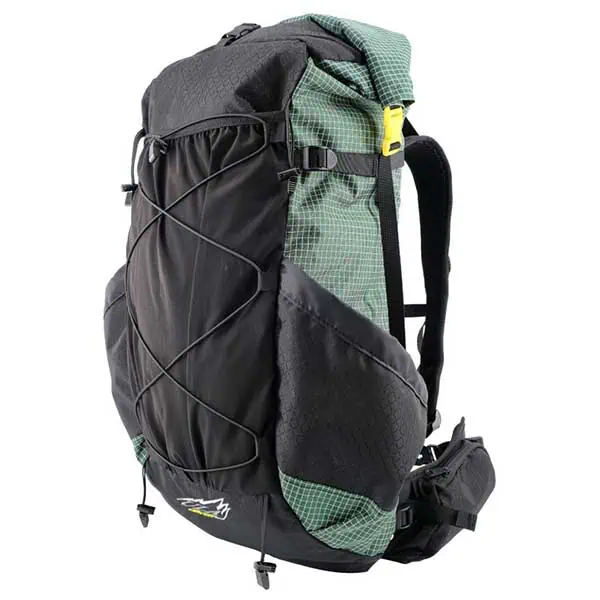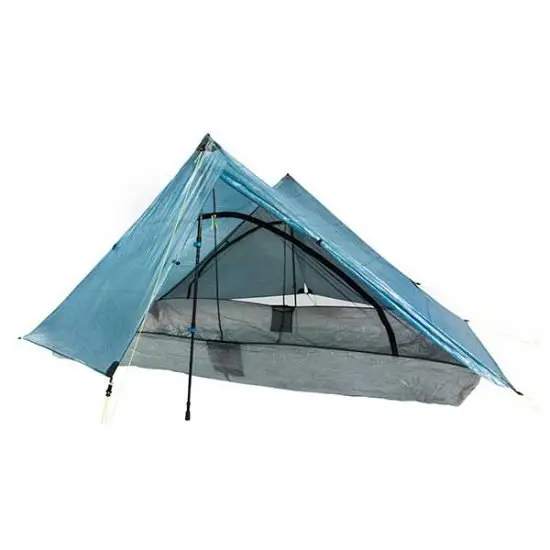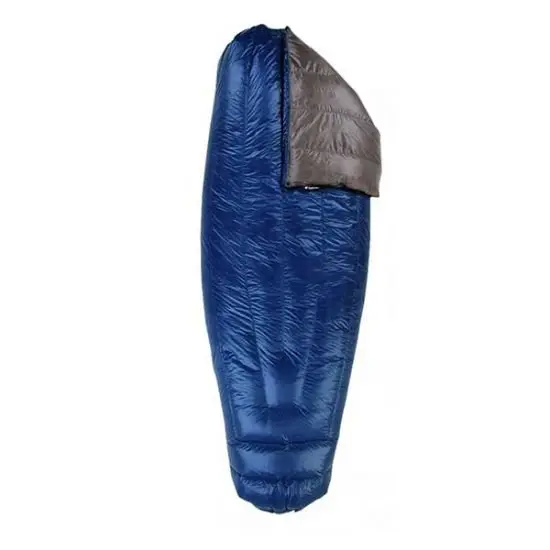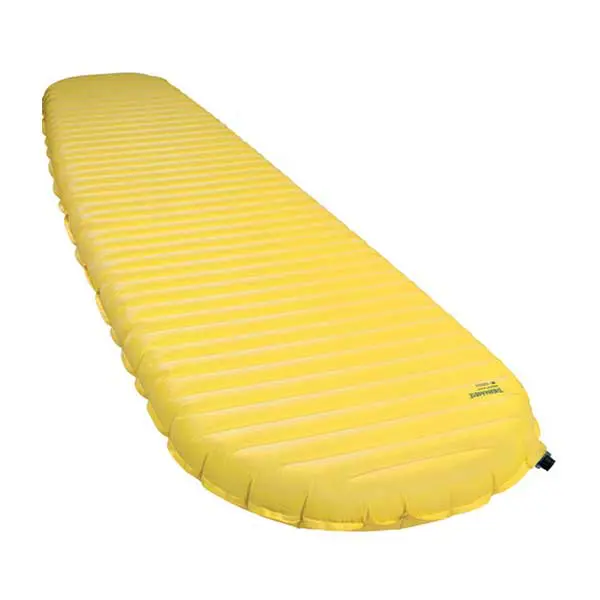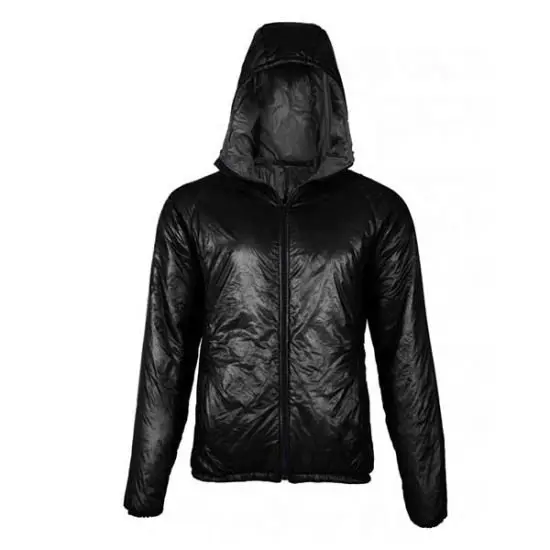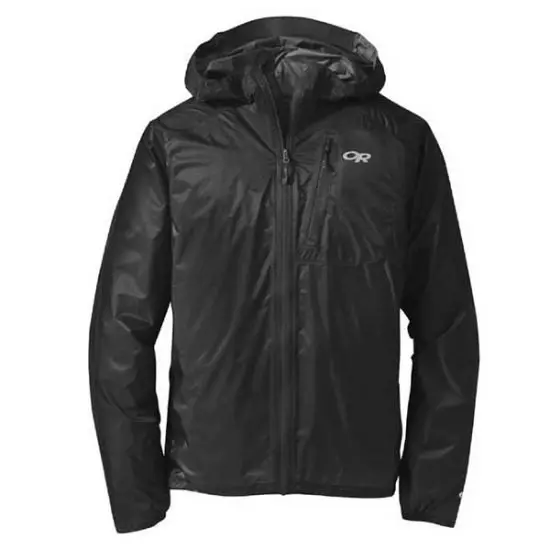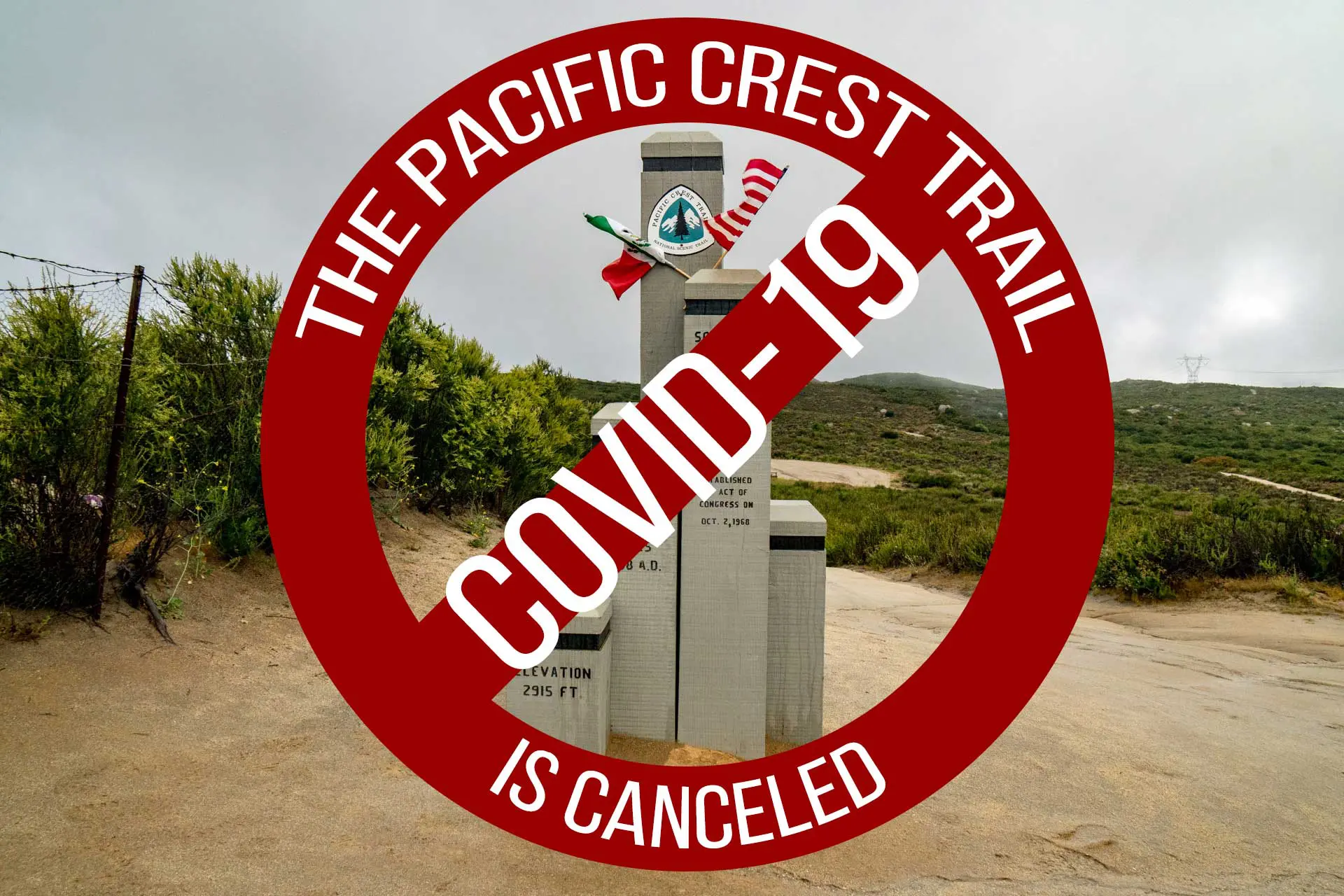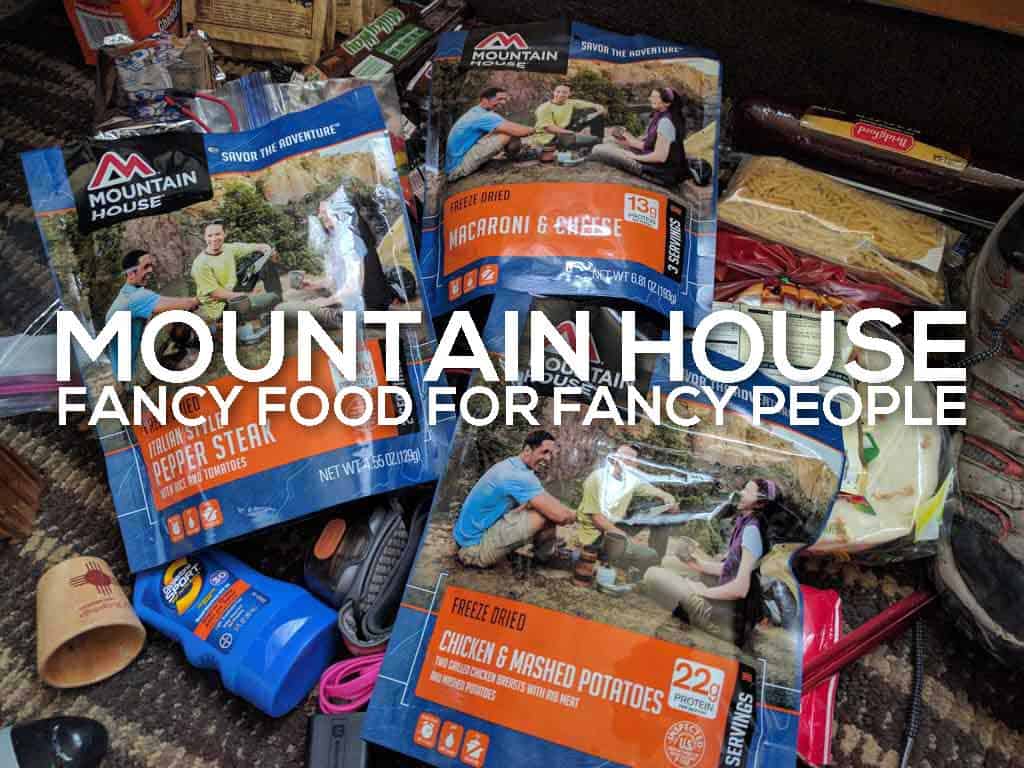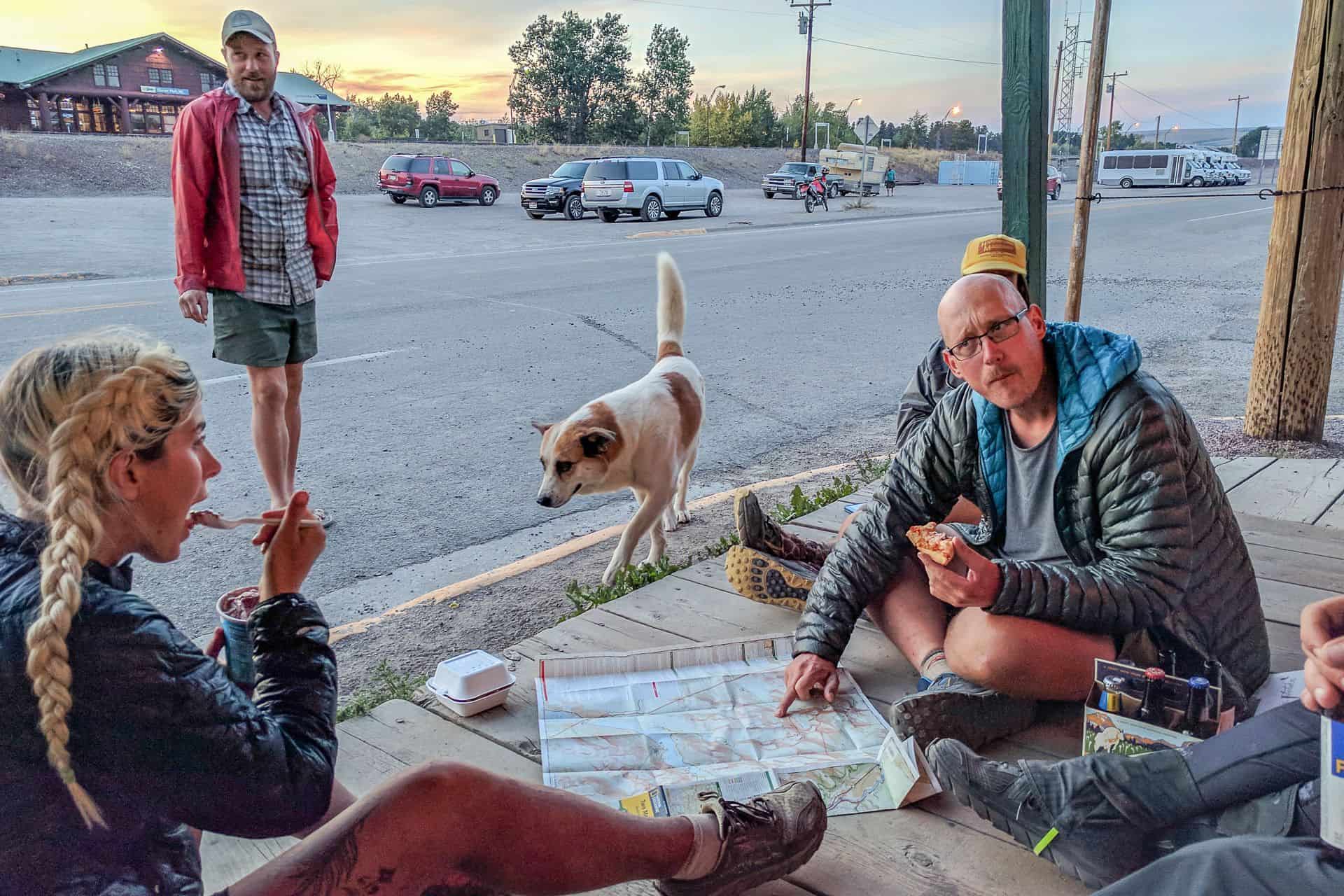Continental Divide Trail Hiker Survey (2022)
The Continental Divide Trail Hiker Survey is distributed to CDT hikers at the end of the hiking season every year with the goal of capturing a snapshot of the year’s class and providing a useful resource to future CDT hikers and recreators. The Survey is now in its sixth year and I would like to extend a huge THANK YOU to everyone who took the time to participate and provide feedback.
This year’s survey is the most comprehensive yet and I’ve devoted a tremendous amount of time to compiling the results. Again, the CDT Survey is meant to be a useful resource to help anyone interested in hiking the Continental Divide Trail figure out how to approach the seemingly-monstrous journey. Every year, I try to improve the data collected and fine-tune the presentation to best help hikers. I would love to hear what you think in the comments below.
Congratulations on arriving at a spot in the CDT Survey that most readers have probably skipped. There’s a lot to cover (I’ll probably need to split this initial article into multiple posts in the future), so I won’t waste your time with any more filler. Here are the results of Halfway Anywhere’s 2022 Continental Divide Trail Hiker Survey!

Notes on the Data
- This year we have 235 completed surveys – a 7.5% increase versus last year and the most ever completed in a single season
- The Continental Divide Trail and thru-hiking in general come with a lot of acronyms and jargon you’re likely unfamiliar with if you’re new to the world of border-to-border foot travel. If you find anything unclear, the thru-hiker glossary may be of use. If you still can’t find what you’re looking for, feel free to drop a comment and let me know.
- I ask that respondents do their best to accurately respond to questions. Not every hiker answers every question and not every answer is guaranteed 100% accurate (e.g. someone may mistakenly report spending $10,000 on their hike instead of $9,000).
- I refer to survey respondents collectively as this year’s “class“. Remember, this is a sample (albeit a large one) and not a comprehensive survey of every person on the CDT this year.
- The results invoke some math. I suggest you familiarize yourself with the words average, median (M), and standard deviation (σ) if you’re looking to get the most out of your time here.
- For stats requiring the length of the CDT for a calculation (e.g. mileage/day), I use 2,982 mi / 4,799 km (the distance used in the FarOut Guides CDT app).
- More detailed posts focused on CDT Gear, CDT Resupply, CDT Horror Stories, and CDT Advice in the coming weeks. If you would like to be notified of new surveys, click here.
Colors differentiating hiker segments:
- Thru-Hikers
- Northbound Thru-Hikers
- Southbound Thru-Hikers
- The number (1) will be appended when only using data from hikers who completed the trail
- The number (0) will be appended when only using data from hikers who did not complete the trail
If no color/label has been appended to a data point, I used all data collected (i.e. it also includes section hiker data and data from hikers who did not complete the trail).
Demographics
First, we look at information from the Continental Divide Trail Class of 2022 that isn’t going to help anyone plan a thru-hike, but that’s interesting nonetheless. We’ll look at CDT hiker gender, age, race, education, sexual orientation, marital status, and children.
CDT Hiker Gender
- 66.8% Male
- 32.4% Female
- 0.5% Non-Binary
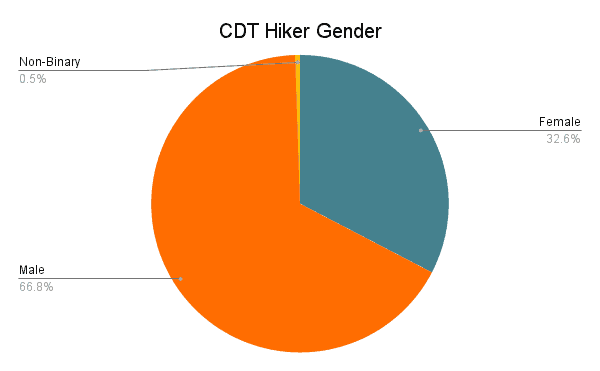
CDT Hiker Age
- < 20 2.6%
- 20-24 7.7%
- 25-29 17.3%
- 30-34 21.9%
- 35-39 11.2%
- 40-49 13.3%
- 50-59 13.3%
- 60-70 11.2%
- 70+ 1.5%
Average age: 39
Median age: 35
σ: 14

CDT Hiker Race
- 90.4% White
- 2.0% Asian
- 1.5% Hispanic or Latino
- 1.0% Native Hawaiian or other Pacific Islander
- 1.0% Two or More Races
- 0.5% Black or African American
- 0.5% American Indian or Alaska Native
- 3.5% Declined to answer

CDT Hiker Education
- 51.5% Bachelor’s degree
- 18.5% Master’s Degree
- 9.7% Some college (no degree)
- 6.2% Associate degree
- 4.2% High school or equivalent
- 2.7% PhD
- 2.6% 12th grade or less
- 2.1% MBA
- 1.1% JD
- 0.5% Vocational Degree
- 0.5% MD
- 0.5% DNP
- 2.1% Decline to answer

CDT Hiker Sexual Orientation
- 80.7% Heterosexual
- 12.2% Bisexual
- 3.3% Queer
- 2.1% Gay
- 1.1% Pansexual
- 1.1% Asexual
- 0.5% Lesbian
- 0.5% Decline to answer

CDT Hiker Marital Status
- 39.2% Single, never married
- 28.2% Married or domestic partnership
- 25.9% In a committed relationship
- 6.6% Divorced
- 1.5% In an open relationship

CDT Hiker Children
- 78.8% No children
- 5.2% One child
- 9.4% Two children
- 4.2% Three children
- 0.5% Four children
- 1.6% Five children
- 0.5% Six children

Where Hikers Are From
With thru-hiking’s growing popularity, the Continental Divide Trail attracts people from across the United States and the world. Here’s a look at where hikers on the trail this year hailed from.
- Countries: Argentina, Australia, Belgium, Canada, Croatia, Czech Republic, Denmark, Finland, France, Germany, Hong Kong, Ireland, Italy, Poland, Lithuania, Netherlands, New Zealand, South Africa, Switzerland, United Kingdom, United States (21 TOTAL)
- States: Alabama, Arizona, California, Colorado, Connecticut, Delaware, Florida, Georgia, Hawaii, Idaho, Illinois, Iowa, Kansas, Kentucky, Louisiana, Maryland, Massachusetts, Michigan, Minnesota, Missouri, Montana, Nebraska, Nevada, New Hampshire, New Mexico, New York, North Carolina, Ohio, Oregon, Pennsylvania, Tennessee, Texas, Utah, Vermont, Virginia, Washington, Wisconsin (37 TOTAL)
Worldwide CDT hiker distribution

CDT hiker distribution across the United States

The Most-Represented Countries
- USA 80.0%
- Canada 6.3%
- Germany 5.4%
- Australia 2.6%
- United Kingdom 2.3%
The Most-Represented States
- California 13.4%
- Washington 11.5%
- Colorado 7.8%
- Pennsylvania 6.8%
- Illinois 5.7%
Hiker Jobs & Working Conditions
How are you able to take so much time off to hike for five months across the United States? Probably a question most would-be Continental Divide Trail hikers have been asked. I ask hikers what they do for work (when they’re not being incredible hiking machines) and how they are able to take time off to hike the CDT.
CDT Hiker Jobs
This year, hikers reported 67 different professions. The most common of which were:
- 10.9% Seasonal Work
- 5.8% Project Manager
- 5.7% Software Engineer
- 5.5% Educator
- 4.6% Sales
- 4.4% Registered Nurse
- 3.3% Artist
- 3.3% IT
- 3.2% Ski Patrol/Guide
19.5% (larger than any single profession) reported being retired and 2.5% were students. More on this in the next section.

CDT Hiker Working Conditions
How was this year’s class able to take time off to hike the CDT?
- 37.0% Quit job
- 21.3% Retired
- 16.7% Flexible conditions
- 9.6% Seasonal worker
- 4.3% Unpaid time off
- 4.3% Unemployed
- 2.6% Gap year
- 2.6% Between jobs
- 2.1% Negotiated into employment
- 1.6% Student

Hiker Experience
Here’s a look at what the 2022 class looked like during their “Planning a CDT Hike” phase. This section examines time spent planning, first-time hikers, hiker experience level, and other trails hiked.
Time Spent Planning
I ask thru-hikers how much time they spend planning for their thru-hikers on a scale of 0 (no time at all) to 10 (every waking moment). I will drill down in a future post on whether this had any impact on hikes.
- 0 – 2.6%
- 1 – 9.7%
- 2 – 10.3%
- 3 – 18.5%
- 4 – 11.8%
- 5 – 13.8%
- 6 – 7.7%
- 7 – 12.8%
- 8 – 6.7%
- 9 – 3.1%
- 10 – 3.1%
Average: 4.5
Median: 4
σ: 2.5

Experience Level
Instead of asking thru-hikers whether this would be/was their first long-distance hike, I ask the distance of thru-hikers longest hike to date (pre-CDT) – more on the specifics of this below. I use 100 mi / 160 km as the cutoff for being considered to have completed a long-distance hike (sorry, Wonderland Trail hikers). If you want to yell at me for the arbitrary number I chose here (or suggest a better one), feel free to do so in the comments at the end of this post.
First Time Thru-Hikers
- 13.6% Yes
- 86.4% No
Average longest trail hiked: 1,939 mi / 3,116 km
Median: 2,600 mi / 4,184 km
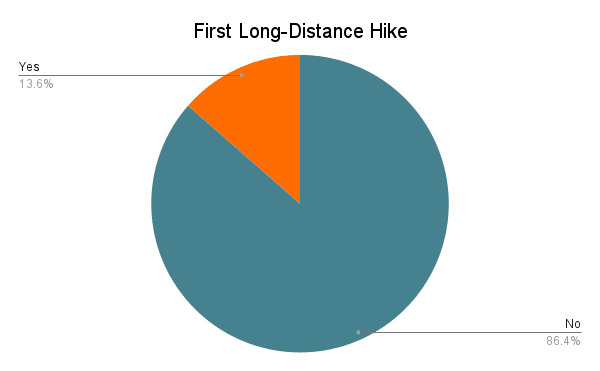
CDT Hiker Experience
In addition to asking about the longest trail completed by thru-hikers pre-CDT, I ask thru-hikers to evaluate their backpacking experience on a scale of 1 to 10.
- Average experience: 8.29
- Median experience: 10
- σ: 2.59
Thru-Hikers (1): 8.98 | σ = 1.94
Thru-Hikers (0): 8.54 | σ = 2.34

Previous Trails Hiked
The trails most commonly hiked by those with experience were:
- 66.3% Pacific Crest Trail
- 37.2% Appalachian Trail
- 14.0% Colorado Trail
- 13.4% Long Trail
- 11.6% Arizona Trail
- 9.9% PCT Section
- 8.7% John Muir Trail
- 8.1% AT Section
- 6.4% CDT Section
- 6.4% Tahoe Rim Trail
- 5.8% Camino de Santiago
- 5.2% Te Araroa
- 3.5% Continental Divide Trail
- 2.9% Florida Trail
- 2.9% Pacific Northwest Trail
- 2.9% Sierra High Route
- 2.3% Coast to Coast Walk
- 2.3% Kungsleden
- 2.3% Superior Hiking Trail
- 19.2% Other

Note: these percentages are of the hikers who have already completed a long-distance hike, not of the entire class. Trails in the “Other” category only had a single hiker report each trail (there are a lot of long-distance trails in the world).
Pre-Hike Training
Next, we’ll look at whether thru-hikers trained in preparation for their thru-hikes, what they did (if anything) to train, and how thru-hikers rated their fitness (pre-CDT).
Did Hikers Train?
- 63.4% Yes
- 36.6% No

How Hikers Trained
- 74.3% Day hikes
- 45.0% Weight training
- 42.2% Running
- 35.8% Multi-day hikes
- 24.8% Bicycling
- 13.8% Cross-training
- 8.3% Step machine
- 8.3% Swimming
- 3.7% Walking
- 2.8% Skiing
- 1.8% Climbing
- 1.8% Yoga
- 4.6% Other

Pre-Trail Fitness Level
I asked thru-hikers to rate their level of fitness (on a scale of 0 to 10) before beginning the trail.
- 0 – 0.0%
- 1 – 1.2%
- 2 – 4.1%
- 3 – 5.2%
- 4 – 4.7%
- 5 – 23.3%
- 6 – 14.0%
- 7 – 25.6%
- 8 – 15.1%
- 9 – 4.7%
- 10 – 2.3%
Average fitness: 6.09
Median fitness: 6
σ: 1.87
Thru-Hikers (1): 6.08 | σ = 1.90
Thru-Hikers (0): 6.12 | σ = 1.73

Money Spent on Hike
How much does it cost to hike the Continental Divide Trail? This a question on the minds of many thru-hikers before starting their hikes. The safe answer? More than you think. Hopefully, the aggregate data from this year’s class will paint a more accurate picture.
Thru-Hikers (1)
$9,221
The average amount spent on the entirety of a thru-hike
M = $8,000 | σ = $5,210
Thru-Hikers (1)
$64
The average amount spent per day on a thru-hike
M = $57 | σ = $32
Thru-Hikers
$1,163
The average amount spent on gear before starting
M = $1,000 | σ = $966


Thru-Hikers (1)
$9,143
Average spent by domestic thru-hikers
M = $8,000 | σ = $5,449
Thru-Hikers (1)
$9,451
Average spent by international thru-hikers
M = $8,250 | σ = $4,509
I ask Continental Divide Trail hikers if they encountered any unexpected expenses while hiking the CDT. Even if you purchase and test all your gear beforehand and pre-package all of your resupplies (I strongly recommend against this resupply strategy), you can’t predict what’s going to happen during a CDT thru-hike. As part of this breakdown, I also ask thru-hikers how much they spend on gear during their thru-hikes – this could be either repairing, replacing, or supplementing gear.
Surprise Expenses Encountered
- 57.8% Yes
- 42.2% No
Unexpected expenses fell into three categories: gear replacement, hotel stays, and travel along the trail. However, hikers also reported towns being unexpectedly pricey and medical expenses in addition to these three bigger reasons.

Unexpected Expense Breakdown
34.5% Replacing gear
- 22.2% replacing failing gear
- 10.3% replacing hated gear
- 2.0% replacing lost/stolen gear
43.4% Hotel stays
- 12.3% due to illness
- 11.3% due to injury
- 9.4% due to fires
- 10.3% due to weather
17.3% Travel along the trail
- 12.8% due to fires
- 1.5% due to illness
- 2.0% due to injury
- 1.0% due to weather
3.0% Towns more expensive than expected
- 2.0% Hotels
- 1.0% Food
3.9% Medical expenses
2.0% Other

Hiking Partners, Camping, & Alone Time
Beginning a thru-hike on your own can sound scary and intimidating, but every year, the majority of thru-hikers (and hikers in general) began their hikes alone. Here, we’ll look at who hikers began with, how much time they spent hiking and camping alone (and cowboy camping), whether they stayed with their hiking partner(s), hiking group sizes, and hiker relationships.
Did hikers begin alone?
- 56.7% Yes
- 16.3% Began with a partner or spouse
- 19.2% Began with a friend(s)
- 4.9% Began with family member(s)
- 3.0% Arranged to start with other hikers (whom they had not met before beginning the CDT)
Of this year’s first-time thru-hikers, 56.5% began their hikes alone (the data above/in the graph is for all hikers).

Time Hiking Alone
- 6.4% – 0
- 8.91% – 1-10
- 0.99% – 11-20
- 4.46% – 21-30
- 2.48% – 31-40
- 7.92% – 41-50
- 3.47% – 51-60
- 9.90% – 61-70
- 18.32% – 71-80
- 18.81% – 81-90
- 17.82% – 91-99
- 0.5% – 100
64.3% – Average time thru-hikers spent hiking alone
σ = 32.1 | M = 75

“Hiking alone” measures the amount of time that hikers weren’t physically walking with someone down the trail. It does not necessarily imply they weren’t hiking with others throughout the day (i.e. camping with others).
Nights Camped Alone
- 18.0% – 0
- 21.46% – 1-10
- 5.58% – 11-20
- 4.29% – 21-30
- 6.01% – 31-40
- 5.58% – 41-50
- 5.15% – 51-60
- 6.87% – 61-70
- 8.15% – 71-80
- 8.15% – 81-90
- 8.15% – 91-99
- 2.6% – 100
σ = 36.8 | M = 33

35% was the average percentage of nights thru-hikers, spent camping alone (σ = 30 | M = 25). When we look at thru-hikers (1), this translates to an average of 44 nights spent camping alone.
Nights Cowboy Camping
- 25.1% – 0
- 36.2% – 1-10
- 14.0% – 11-20
- 7.7% – 21-30
- 3.8% – 31-40
- 4.7% – 41-50
- 0.9% – 51-60
- 1.7% – 61-70
- 2.1% – 71-80
- 3.4% – 81-90
- 0.0% – 91-99
- 0.4% – 100
σ = 23.6 | M = 5

17% was the average percentage of nights thru-hikers, spent cowboy camping (σ = 23.6 | M = 5). When we look at thru-hikers (1), this translates to an average of 23 nights of cowboy camping.
Hiking Partner(s)
Beginning a hike with someone is one thing, but managing to remain together and finishing a hike with someone is arguably as impressive as the trail itself. Here’s how things worked out for those who began their hikes with another person.
Remaining with Partner(s)
- 48.5% Yes
- 18.6% Yes, for the most part
- 18.6% No, wasn’t the plan
- 7.2% No, wasn’t for the best
- 4.1% Partner(s) got off
- 2.1% No, broke up

Size of Hiking Groups
Despite the majority of hikers beginning their Continental Divide Trail hikes alone, most hikers will link up and hike with at least one other person for a considerable amount of their time on the CDT. Some hikers refer to this as a trail family or “tramily“. Here are the largest groups hikers found themselves hiking with on a regular basis.
Average group size: 4.0
Median size: 4
σ: 3.1

Relationship Status
Here, I ask thru-hikers, “at the start of the CDT, were you in a relationship?”
- 53.3% Yes, and I am still with the same person
- 37.6% No, and I am still single
- 5.5% No, but now I am in a relationship with someone I met on the CDT
- 2.0% Yes, but now I am in a relationship with someone I met on the CDT
- 1.5% Yes, but I am now single
- 0.5% Yes, but now I am in a relationship with someone I met before the CDT
- 0.5% No, but now I am in a relationship with someone I met before the CDT

Starting Dates & Locations
Unlike the Pacific Crest Trail, the Continental Divide Trail does not have a permit that hikers are issued for the entirety of the trail (at least not yet). Instead, hikers can begin the CDT at either the southern or northern terminus whenever they choose.
That said, a permit is required to camp in Glacier National Park (i.e. from the northern terminus south), Yellowstone National Park, and Rocky Mountain National Park. A permit is also required to recreate on state lands in New Mexico (i.e. for everyone thru-hiking the CDT). That permit can be obtained from the Continental Divide Trail Coalition (CDTC) here.
Northbound CDT Hikers
Since getting to what’s generally considered to be the official southern terminus at Crazy Cook isn’t easy, the Continental Divide Trail Coalition (CDTC) operates a (paid) shuttle service. In recent years, a few private individuals have also started independent (for-profit) shuttle operations. In this section, we’ll go over where northbound CDT hikers began, when they began, and how they got to the southern terminus.
Northbound Start Location
- 1.3% Antelope Wells
- 96.0% Crazy Cook
- 3.4% Lordsburg
Alternate locations for beginning a CDT thru-hike (usually Columbus or Antelope Wells) aren’t as popular as they once were.

Northbound
April 20
Average start date
M = April 20
Northbound
May 2
Average start date of hikers who said they would like to have started earlier
Northbound
April 19
Average start date of hikers who said they would like to have started later
How Hikers Reached Crazy Cook
- 54.9% CDTC Shuttle
- 27.7% Crazy Cook Shuttle
- 9.4% Trail Angel
- 7.2% Private Transport
- 1.4% Hiked

Southbound CDT Hikers
Just as there are options for starting points for northbound CDT hikers, there are also options for southbound CDT hikers. This section covers where southbound CDT hikers began, when they began, and how they got back from the southern terminus (those that completed the trail).
Southbound Start Location
- 93.8% Chief Mountain
- 4.1% Many Glacier
- 2.1% Other

Southbound
June 25
Average starting date
M= June 24
Southbound
June 16
Average starting date of hikers who said they would like to have started later
Southbound
July 4
Average starting date of hikers who said they would like to have started earlier
How Hikers Returned from Crazy Cook
- 30.2% Crazy Cook Shuttle
- 27.9% Trail Angel
- 20.9% Private Transportation
- 20.9% Hiked

Hiking Stats & Dates
The Continental Divide Trail is generally considered to have five sections: New Mexico, Colorado, Wyoming, Idaho/Southern Montana, and Northern Montana. Because the CDT can get a bit crazy when it comes to alternates (especially the Anaconda Route or Big Sky/Super Butte Cutoff in Montana), I’ve divided the following data into New Mexico, Colorado, Wyoming, and Idaho+Montana.
In this section, we look at how long thru-hikers took for each section of the trail, a breakdown of hike lengths and averages, and a look at how many days hikers took off (zero/nearo days).
Northbound Hike Breakdown
The average number of days it took hikers to complete:
- 34 – New Mexico
- 45 – Colorado
- 30 – Wyoming
- 39 – Idaho+Montana
- 139 Northbound (1) – Entire CDT
Southbound Hike Breakdown
The average number of days it took hikers to complete:
- 31 – New Mexico
- 33 – Colorado
- 27 – Wyoming
- 44 – Idaho+Montana
- 133 Southbound (1) – Entire CDT
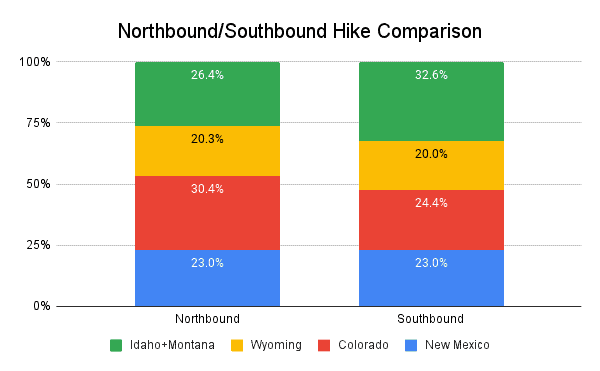
Length of Thru-hikes
Thru-Hikers (1)
143
The average number of days of an entire thru-hike
(M = 144 | σ = 20)
Thru-Hikers (1)
128
The average number of days hiking (total minus zero days)
(M = 127 | σ = 19)
Northbound (1)
9/14
The average finish date (14/9 for the rest of the world)
(M = 9/18)
Thru-Hikers (1)
21.3 mi
The average daily mileage (34.3 km)
(σ = 3.3 mi / 5.3 km)
Thru-Hikers (1)
23.9 mi
The average daily mileage after removing zero days (38.5 km)
(σ = 3.8 mi / 6.1 km)
Thru-Hikers (1)
41 mi
The average longest day of hiking (66 km)
(M = 38 | σ = 12.7 mi / 20.4 km)
Zero and Nearo Days (i.e. Days Off)
Thru-Hikers (1)
17
The average number of zero days (days off from hiking)
(M = 16 | σ = 9)
Thru-Hikers (1)
15
The average number of nearo days (low mileage days)
(M = 12 | σ = 9)
Thru-Hikers (1)
6
The average longest consecutive number of zero days
(M = 4 | σ = 5)
Flip-Flopping, Completion Rates, & Footpaths
As some of you may have already deduced from the mention of the fact there are multiple locations at both the Mexican and Canadian borders where Continental Divide Trail hikers begin their hikes, it follows that there are multiple locations where CDT hikers can end their hikes.
This section looks at where northbound hikers finished, where southbound hikers finished, and what percentage of hikers completed their hikes (in either direction).
Northbound Finish Location
- 50.0% Waterton Lake
- 25.5% Chief Mountain
- 9.9% Other (New Mexico)
- 8.3% Other (Colorado)
- 5.0% Other (Wyoming)
- 3.5% Other (ID+MT)

All southbound thru-hikers reported finishing their hikes at Crazy Cook Monument at the New Mexico-Mexico Border south of Lordsburg.
CDT Completion Rates
Most people begin a Continental Divide Trail thru-hike intending to complete the trail. Unfortunately, not everyone who sets out on this most epic adventure of border-to-border glory completes the trail. Every year, a large percentage of people hoping to hike the CDT will fail to complete the trail.
We’re going to look at completion rates, but we are doing so with a caveat. Since I distribute this survey myself, and because it is not required of CDT hikers, survey respondents are a self-selecting group who likely definitely skew toward having completed the trail. A hopeful thru-hiker who quit during their first week of hiking in April is likely paying little attention and caring far less about the Continental Divide Trail survey when it’s released in the fall. So if you’re reading this and planning to hike the CDT next year, sign up for the survey now to make sure you receive it!
Thru-Hikers (1)
82%
The percentage of thru-hiker respondents who completed the CDT.
Northbound (1)
81%
The percentage of northbound thru-hiker respondents who completed the CDT.
Southbound (1)
84%
The percentage of southbound thru-hiker respondents who completed the CDT.
Flip-Flopping & Footpaths
Flip-flopping is when a hiker skips a section of the trail (the flip) intending to come back to hike it later (the flop). This can happen because a hiker wants to avoid snow, skip a fire closure, or because of some other logistical issue. The flip-flop usually takes one of two forms.
One is a hiker skipping ahead, continuing to hike the same direction, and then returning to the point they originally departed the trail to hike the skipped section later (e.g. a northbound hiker skips from the NM/CO border to the CO/WY border, then hikes north to Canada before returning to the NM/CO border to hike north to the CO/WY border).
It can also be when a hiker skips ahead and then hikes the skipped section in the opposite direction of their original hike before jumping back up to the point where they originally skipped to and continuing their hike in the original direction (e.g. northbound hiker jumps from NM/CO border to CO/WY border and then hikes south to NM/CO border before returning to CO/WY border to continue hiking north).
Some hikers get wild with their flip-flopping; I recommend avoiding it altogether, if possible.
Here is what flip-flopping on the CDT looked like in 2021.
Did Hikers Flip-Flop
Thru-Hikers 17% Yes
Thru-Hikers 83% No
Northbound 21% Yes
Northbound 79% No
Southbound 6% Yes
Southbound 94% No

Why Hikers Flip-Flopped
- 55.9% Fires
- 41.2% Snow
- 2.9% Personal/Logistical

I’ve struggled in the past to display this information in a way I think will be helpful and accurately represent the CDT flip-flopping picture, but I think this is an improvement upon previous years. Please let me know if you have any suggestions. I am considering a more detailed flip-flopping post based on the data.

It may sound straightforward enough, “Did you complete the CDT? Yes or no?” – but what constitutes a completed thru-hike isn’t necessarily the same for everyone.
Some people insist you need to have unbroken steps between Mexico and Canada along the official Continental Divide Trail to constitute a thru-hike while others may forgive skipping a road walk, hitchhiking around a fire closure, or taking alternates (or shortcuts).
To get a better idea of how much of the trail this year’s finishers hiked, I asked about their footsteps between the terminuses.
Continuous Footpaths
- 34.9% Yes, and I road-walked around any fire closures
- 18.7% Yes, but I skipped the fire closures
- 19.9% Mostly, but I may have missed a few miles
- 21.7% No, I skipped or hitched past small sections of the trail
- 3.4% No, I skipped or hitched past large section of the trail
- 1.2% Yes, and I disobeyed/hiked through fire closures*
*Absolutely do not disobey fire closures. Yes, thru-hiking is awesome; no, thru-hiking doesn’t make you special. Hiking through fire closures puts you, crews, and SAR at risk. Don’t be an idiot. Nobody cares if you’re hiking the CDT; closures are part of the reality of the trail.

Alternate Routes
The Continental Divide Trail is more well-defined than many suspect, but there are loads of alternate trails (sometimes known as “shortcuts”) hikers can take either instead of or in addition to the official CDT. I ask about these alternates to get an idea of what the most common CDT thru-hikes looked like. Alternates are listed in geographical order from south to north.
The following colors indicate the popularity of each alternate (the percentage of hikers who took each): over 75%, 50-75%, 25-50%, and under 25%.
New Mexico Alternates
- Columbus Alternate: 1.7%
- Gila River Alternate: 87.4%
- Gila River High Route Alternate: 33.7%
- Pie Town Alternate via Mangas Mountain: 56.6%
- Cebolla Wilderness Alternate: 54.9%
- Bonita-Zuni Alternate: 29.7%
- Mount Taylor Alternate: 45.1%
- Ghost Ranch Alternate: 53.1%
Colorado Alternates
- Great Divide Alternate: 10.8%
- Elwood Pass 7.3%
- Creede Cutoff: 22.5%
- Mirror Lake Alternate: 10.8%
- Collegiate East: 16.8%
- Twin Lakes Cutoff: 40.4%
- Mount Elbert: 25.3%
- Silverthorne Alternate: 24.1%
- Montezuma Alternate: 7.2%
- Argentine Spine: 23.5%
- Rocky Mountain National Park Shortcut: 51.2%
Wyoming Alternates
- Ley Alternate south of Rawlins: 27.8%
- Wind River High Route: 12.1%
- Cirque of the Towers: 85.6%
- Knapsack Col: 46.2%
- Leeds Creek: 9.8%
- Old CDT (near Dubois): 1.7%
- Gros Ventre: 2.3%
- Teton Crest Trail: 6.9%
Idaho/Montana Alternates
- Mack’s Inn Alternate: 48.1%
- Super Butte Cutoff: 32.9%
- Anaconda Cutoff: 65.7%
- Butte Connector: 1.7%
- Spotted Bear Pass: 63.5%
- Ptarmigan Tunnel: 0.6%
- Chief Mountain: 46.1%
“Ley Alternate” refers to an alternate route on the Ley Maps – maps produced by CDT hiker Jonathan Ley. More on the Ley Maps here.
Hiker Challenges
I ask hikers which sections of the CDT they found to be the most difficult and which they found to be the easiest. Next year, I plan on expanding this question to get a more specific idea of where hikers find the trail to be most and least challenging.
I’ve also asked hikers to rate some of the challenges they faced on the trail on a scale of 1 to 10. This includes snow, stream crossings, mosquitoes, elevation, rain/hail, storms/lightning, wind, rodents, cold, heat, smoke/fires, and COVID.
Easiest CDT Section
- 67.9% – New Mexico
- 1.2% – Colorado
- 18.7% – Wyoming
- 6.7% – Idaho/Southern Montana
- 10.4% – Northern Montana

Most Difficult CDT Section
- 5.5% – New Mexico
- 81.2% – Colorado
- 1.2% – Wyoming
- 10.3% – Idaho/Southern Montana
- 1.8% – Northern Montana

On-Trail Issues
I asked hikers, on a scale of 1 to 10, how much of an issue each of the following was during their hikes.
- 4.06 – Heat
- 3.63 – Mosquitoes
- 3.44 – Storms
- 3.27 – Wind
- 3.25 – Snow
- 3.24 – Rain/Hail
- 3.24 – Cold
- 3.18 – Fire/Smoke
- 2.97 – Elevation
- 1.46 – Stream Crossings
- 1.06 – COVID
- 0.44 – Rodents

Why Hikers Didn’t Finish
In case you were left wondering what happened to the hikers who didn’t complete the CDT this year when we covered completion rates above, fear not. Here we look at the specifics as to why hikers didn’t complete the Continental Divide Trail this year.
Why Hikers Stopped Hiking
- 27.6% Injury
- 21.4% Personal
- 20.0% Illness
- 11.4% Boredom
- 9.1% Family
- 7.7% Snow
- 5.9% Burnt Out
- 4.0% Time
- 3.7% School
- 3.2% Fires
- 3.1% Financial

Hike-Ending Injury Breakdown
Injury is a big killer of thru-hikes and is typically something hikers can exercise some control over (as opposed to fires that can flare up seemingly without warning). Here, we break down what kinds of injuries ended hikes and where these hike-ending injuries occurred.
Hike-Ending Injuries
- 12.5% Bruised Ribs
- 12.5% Torn Rotator Cuff
- 12.5% Knee injury
- 12.5% Plantar fasciitis
- 12.5% Sciatica
- 25.0% Overuse injury (leg)
- 12.5% Broken bone (foot)
Where Injuries Occurred
- 50% New Mexico
- 50% Colorado

Miles Completed by Hikers
- 8.1% – < 100
- 0.0% – 250 – 500
- 13.5% – 500 – 750
- 10.8% – 750 – 1000
- 5.4% – 1000 – 1250
- 13.5% – 1250 – 1500
- 13.5% – 1500 – 1750
- 16.2% – 1750 – 2000
- 10.8% – 2000 – 2250
- 2.7% – 2250 – 2500
- 5.4% – > 2500
Average: 1,192 mi / 1,918 km
Median: 1,250 mi / 2,012 km
σ = 640 mi / 1,030 km

Resupply
The word “resupply” can be anxiety-inducing if you’re new to the idea of long-distance thru-hiking. What is resupply? Where does it come from? How much of it is there? How do you get it? Will it hurt?
Resupply is getting yourself more food to power more hiking. It need not be scary or intimidating. Resupply on a Continental Divide Trail has become more simple over the years, but when and where hikers resupply is still a question that many find overwhelming.
Here we have this year’s resupply stats, resupply strategy/boxes, resupply box suggestions, hitchhiking difficulties, where hikers resupplied, favorite and least favorite resupply stops, favorite meals and snacks, and resupply advice.
CDT Resupply Stats
Thru-Hikers (1)
28
The average number of resupplies over the entire trail
(M = 28 | σ = 5.7)
Thru-Hikers (1)
6
The average number of days between resupplies
(M = 6 | σ = 3)
Thru-Hikers (1)
114
The average number of miles between resupplies (183 km)
(M = 106 mi / 171 km | σ = 30 mi / 48 km)
Thru-Hikers
4.8
The average number of resupply boxes prepared ahead of time
(M = 2 | σ = 7.6)
Thru-Hikers (1)
7
The average total number of resupply boxes sent
(M = 5 | σ = 5.9)
Thru-Hikers (1)
21%
The average percent of resupplies sent as boxes
(M = 11% | σ = 24%)
Resupply Strategy
- 5.5% Mailed all resupply
- 9.4% Mailed most resupply (> 50%)
- 40.2% Mailed some resupplies (10-50%)
- 42.3% Mailed a few resupply (1-10%)
- 7.5% Mailed no resupply
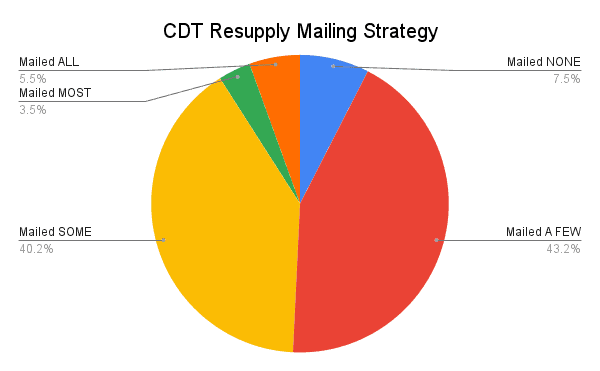
Many prospective CDT thru-hikers find themselves incredibly concerned about resupply – but take a breath. Remember you can mail yourself boxes from on the trail. You do not have to have all your resupply boxes (or resupply locations) prepared ahead of time. Many towns have supermarkets (and post offices).
That said, it can be helpful (and time-saving) to mail yourself resupply boxes. Hikers may choose this option because of a resupply stop’s limited food selection, dietary restrictions, high prices, or even the owners of the local resupply establishment being awful people (that said, most are lovely).
Something else to consider when thinking about resupply is the fact that many towns along the CDT are only accessible via car (or ludicrously long, dangerous, and ill-advised road walks). How do you get to these towns? Many hikers elect to hitchhike.
Here is where CDT hikers recommend sending a resupply box and where they had difficulty hitchhiking to/from.
Suggest Mailing Resupply
- Pie Town (New Mexico) 83.7%
- Doc Campbell’s (New Mexico) 41.0%
- Ghost Ranch (New Mexico) 35.5%
- Lima (Idaho) 35.5%
- Leadore via Bannock Pass (Idaho) 31.9%
- Encampment via Battle Pass (Wyoming) 30.1%
- East Glacier Village (Montana) 29.5%
- South Pass City (Wyoming) 13.3%

Difficult Hitches
- Encampment via Battle Pass (Wyoming) 16.3%
- Lander (Wyoming) 13.9%
- Leadore via Bannock Pass (Idaho) 13.9%
- Lake City via Spring Creek Pass (Colorado) 10.2%
- Pagosa Springs via Wolf Creek Pass (Colorado) 10.2%
- Dubois via Togwotee Pass (Wyoming) 9.6%
- Augusta (Montana) 8.4%
- Darby via Chief Joseph Pass (Montana) 7.2%

Where Hikers Resupplied
I ask hikers to report on where they resupplied – not where they stopped/passed through, but where they actually purchased, picked up, were given, or otherwise came into a new stock of food. For example, the trail passes through the middle of Silver City; theoretically, all thru-hikers who complete the trail will go there, but not all thru-hikers resupply there. Make sense? I hope so. If you’re struggling with this, you’ll have issues on the trail.
Locations are listed in geographical order from Mexico to Canada (that’s south to north) and, again, I use the following colors to indicate each resupply stop’s popularity: over 75%, 50-75%, 25-50%, under 25%.
New Mexico Resupply
- Hachita – 1.2%
- ⛺ Lordsburg – 97.1%
- Deming – 0.6%
- ⛺ Silver City – 97.7%
- ⛺ Doc Campbell’s – 90.2%*
- Reserve – 14.9%
- Davila Ranch – 1.2%
- ⛺ Pie Town – 86.8%*
- Quemado – 3.5%
- ⛺ Grants – 90.8%
- Albuquerque – 5.8%
- Thoreau – 0.6%
- Crownpoint – 0.6%
- ⛺ Cuba – 78.7%
- Española – 0.6%
- Santa Fe – 10.3%
- ⛺ Ghost Ranch – 33.3%*
- Taos – 0.6%
- Chama via Cumbres Pass – 78.2%
Colorado Resupply
- Pagosa Springs via Wolf Creek Pass – 84.1%
- South Fork via Wolf Creek Pass – 6.1%
- Platoro – 4.9%
- Del Norte – 3.7%
- Creede – 21.5%
- Silverton via Stony Pass – 26.4%
- Durango – 3.9%
- Lake City via Spring Creek Pass – 69.3%
- Sargents – 0.6%
- ⛺ Monarch Mountain Lodge – 13.5%
- Monarch Spur RV Park – 1.2%
- Salida via Monarch Pass – 85.9%
- Gunnison – 1.2%
- Buena Vista – 9.2%
- ⛺ Twin Lakes – 68.7%
- Leadville – 72.4%
- ⛺ Copper Mountain – 6.8%
- Breckenridge – 44.8%
- Frisco – 16.6%
- Silverthorne – 27.6%
- Dillon – 13.5%
- Winter Park – 45.4%
- Fraser – 4.9%
- Denver – 11.7%
- ⛺ Grand Lake – 92.6%
- Steamboat Springs via Rabbit Ears Pass – 95.7%
Wyoming Resupply
- Encampment via Battle Pass – 59.3%*
- Riverside via Battle Pass – 22.7%
- ⛺ Rawlins – 98.3%
- ⛺ Big Sandy Lodge – 5.3%
- ⛺ South Pass City – 20.9%*
- Atlantic City – 11.1%
- Lander – 70.9%
- Pinedale – 68.6%
- Lava Mountain Lodge via Togwotee Pass – 7.0%
- Dubois via Togwotee Pass – 71.5%
- Jackson – 14.5%
- Togwotee Mountain Lodge – 1.2%
- ⛺ Brooks Lake Lodge – 4.7%
- ⛺ Grant Village in Yellowstone – 36.6%
- ⛺ Old Faithful Village in Yellowstone – 69.8%
- Mammoth Village in Yellowstone – 1.6%
Idaho/Montana Resupply
- West Yellowstone – 46.3%
- ⛺ Island Park / Mack’s Inn – 48.3%
- Big Sky – 5.4%
- Ennis – 1.3%
- Lima – 89.3%*
- Leadore via Bannock Pass – 91.3%*
- Salmon – 3.4%
- Jackson – 4.0%
- Darby via Chief Joseph Pass – 76.5%
- Hamilton via Chief Joseph Pass – 2.0%
- Camp Sula – 6.7%
- Wisdom – 5.4%
- Wise River – 1.1%
- ⛺ Anaconda – 72.2%
- Whitehall – 3.4%
- Butte – 21.6%
- Bozeman – 6.3%
- Helena – 88.6%
- Elliston – 2.3%
- ⛺ High Divide Outfitters – 7.4%
- ⛺ Lincoln – 32.4%
- ⛺ Benchmark Wilderness Ranch – 10.2%
- Augusta – 80.7%
- ⛺ East Glacier Village – 94.3%*
- Kalispell – 2%
- ⛺ Two Medicine – 9.6%
- Saint Mary – 2.3%
- ⛺ Many Glacier – 23.3%
*Stops where this year’s class suggests sending resupply boxes
⛺ Stops that can be reached without hitchhiking or road walking
Favorite & Least Favorite Resupply Stops
Now we know the most popular stops for resupplying and for sending resupply boxes, but what about hikers’ favorite and least favorite resupply stops? When asking this question I specify “‘Favorite/Least Favorite’ means where you most/least enjoyed, not where had the best/worst resupply options (although these could be the same).”
Favorite Resupply Stop
Anaconda, MT
36% of hikers voted for Anaconda
Least Favorite Resupply Stop
Cuba, NM
31% of hikers voted for Cuba
Favorite Resupply Stops
- New Mexico: Silver City (35%)
- Colorado: Salida (26%)
- Wyoming: Lander (29%)
- Idaho/Montana: Anaconda (36%)
Runners-Up
- New Mexico: Chama (23%)
- Colorado: Leadville (25%)
- Wyoming: Pinedale (26%)
- Idaho/Montana: East Glacier Village (20%)
Least Favorite Resupply Stops
- New Mexico: Cuba (31%)
- Colorado: Steamboat Springs (10%)
- Wyoming: Encampment (11%)
- Idaho/Montana: Lima (23%)
Runners-Up
- New Mexico: Pie Town (29%)
- Colorado: Grand Lake (7%)
- Wyoming: Rawlins (9%)
- Idaho/Montana: Leadore (21%)
Hiker Diets
For the final piece of the resupply puzzle, we take a look at hiker dietary restrictions, how easy they found resupplying with these restrictions, and which meals and backpacking snacks hikers enjoyed most out on the CDT. More on this is to come in the CDT Resupply Guide.
Dietary Restrictions
- 26.3% Yes
- 73.7% No

Specific Dietary Restrictions
- 43.6% Vegetarian
- 23.6% Vegan
- 12.7% Dairy-free
- 7.3% Pescatarian
- 5.5% Gluten-free
- 5.5% Keto
- 5.5% Nut Allergy
- 3.6% Kosher
- 1.8% Lactose Intolerant
- 1.8% Soy Allergy

Favorite Backpacking Meals
- Knorr Rice Sides 33.0%
- Backpacker’s Pantry 29.2%
- Peak Refuel 29.2%
- Mountain House 19.8%
- Good To-Go 17.9%
- AlpineAire Foods 12.3%
- Patagonia Provisions 8.5%
- Greenbelly Meals 5.7%
- Farm to Summit 5.7%
- Food for the Sole 2.8% (out of business 😢)
Favorite Backpacking Snacks
- Potato Chips 21.5%
- M&M’s 20.9%
- Honey Stinger Waffles 19.8%
- Bobo’s Oat Bars 19.6%
- Trail Mix 18.6%
- Snickers Bars 18.4%
- Peanut Butter 17.8%
- Larabars 15.3%
- Clif Bars 13.5%
- Lenny & Larry’s Complete Cookies 13.5%
Resupply Changes
Hindsight is 20/20 (unless you’re looking back through the darkness for that mountain lion you think might be following you – but that’s likely a deer). Here is what hikers said they would change about their resupply strategies if they had the chance to do it all over again. These don’t change much from year to year, so I would highly encourage you to heed this advice when considering your resupply options.
49% of hikers say that they would have made changes to their resupply strategy. Here are the most popular changes hikers would have made to their CDT resupply.
- Send fewer resupply boxes* (28.7%)
- Send more variety in boxes (23.5%)
- Send more resupply boxes^ (18.3%)
- Send healthier food in boxes (17.4%)
- Send boxes from on trail instead of ahead of time (14.8%)
- Send less food in boxes (12.2%)
*The average number of boxes sent by hikers who said they would have liked to have sent fewer boxes was 9.
^The average number of boxes sent by hikers who said they would have liked to have sent more boxes was 4.
Thru-Hikers
20.5%
The number of thru-hikers who went stoveless for the entirety of their hikes.
I’ll be following up on this with a more detailed breakdown of this year’s CDT resupply. If you would like to be notified of new posts, click here.
Find all CDT Resupply posts here.
Thru-Hiking Gear
Potentially what Continental Divide Trail hikers spend the most time obsessing over before (and on…and after) the trail is their thru-hiking gear. Gear choices play an essential role in a thru-hike, but there is no magical gear combination that will guarantee you a successful thru-hike (if you know otherwise, please let me know).
I do a deep dive into gear used by CDT hikers in my CDT Gear Guide, but here’s a taste of what to expect. Let’s take a look at what this year’s CDT Class had with them out on the trail.
Thru-Hikers (1)
17.52 lb
Average pre-hike base weight (7.947 kg)
(M = 15 lb / 6.8 kg | σ = 10.9 lb / 4.9 kg)
Thru-Hikers (1)
16.52 lb
Average post-hike base weight (7.493 kg)
(M = 15 lb / 6.8 kg | σ = 8.43 lb / 3.8 kg)
Thru-Hikers (1)
-1 lb
Average total change in base weight (531 g)
(M = 0)
Thru-Hikers
51.8 L
Average backpack size
(M = 55)
Thru-Hikers
8.8°F
Average sleeping bag rating (-12.9°C)
(M = 10°F / -12.2°C)
Thru-Hikers (1)
4.8
Average total number of shoes used
(M = 5)
There are more detailed and more interesting breakdowns of this information on the way in this year’s CDT Gear Guide. For now, let’s take a peek at some of the gear thru-hikers were using on the trail this year. Here are the most common “Big 4” items: packs, shelters, sleeping bags/quilts, and sleeping pads (I know it’s the “Big 3”, but I include sleeping pads, get over it) along with the most common insulated jackets and shells.
Again, there will be extensive breakdowns in the CDT Gear Guide.
Most Common CDT Backpacks
Most Common CDT Shelters
Most Common CDT Sleeping Bags/Quilts
Most Common CDT Sleeping Pads
Most Common CDT Insulated Jackets
- Enlightened Equipment Torrid (Men’s/Women’s)
- Mountain Hardwear Ghost Whisperer/2 Hoody (Men’s/Women’s)
- Mountain Hardwear Ghost Whisperer/2 (Men’s/Women’s)
- Arc’teryx Cerium Hoody (Men’s/Women’s)
- REI Co-op 650 (Men’s/Women’s)
- Patagonia Micro Puff Hoody (Men’s/Women’s)
- Rab Microlight Alpine Jacket (Men’s/Women’s)
- Montbell Plasma 1000 Down Parka (Men’s/Women’s)
- Arc’teryx Cerium Jacket (Men’s/Women’s)
- Decathlon Forclaz Trek 100 (Men’s/Women’s)
Most Common CDT Shells
- Outdoor Research Helium (Men’s/Women’s)
- Frogg Toggs Ultra-Lite2
- Montbell Versalite (Men’s/Women’s)
- Marmot PreCip Eco (Men’s/Women’s)
- REI Essential Rain Jacket (discontinued)
- Enlightened Equipment Visp (Men’s/Women’s)
- Lightheart Gear Rain Jacket
- The North Face Venture 2 (Men’s/Women’s)
- Zpacks Vertice (Men’s/Women’s)
- Patagonia Torrentshell 3L (Men’s/Women’s)
This is just the tip of the proverbial thru-hiking gear iceberg. As mentioned above, I will be publishing a detailed breakdown of this year’s CDT gear. This will include (in addition to everything above) water treatment, stoves, fleeces, snow gear, satellite messengers/PLBs, additional gear, luxury items, what hikers didn’t like about their gear, what gear decisions (might have) helped hikers to a successful thru-hike, how hikers would change/adapt their gear for a future hike, and more.
Technology on Trail
Gone are the days of the Continental Divide Trail of old when it was a trail sought out by only uber-experienced backcountry orienteers; thanks to the magic of technology, any dodo can grab a phone and have a reasonably good chance of not killing themselves on the trail.
Phones are everywhere on the trail. If the sight of a cellular device in the wilderness distresses you, then prepare yourself. Phones are hikers’ cameras, GPS devices, televisions, music players, town-researching devices, and (sometimes) SOS devices (that said, I suggest a Garmin inReach Mini 2 if you’re looking for an SOS device).
There are several apps commonly used by Continental Divide Trail hikers – and even one designed specifically for the CDT (that you should most certainly invest in). Here are the phones and apps hikers were using out on the trail this year.
CDT Hiker Phones
- 39.6% Android
- 1.0% Didn’t carry a phone
- 60.0% iOS (iPhone)

CDT Hiker Apps
- 97.9% FarOut Guides
- 51.3% Gaia GPS
- 44.1% Avenza Maps
- 24.6% Garmin Explore App
- 12.8% CalTopo
- 7.7% Peak Finder
- 7.7% Strava
- 7.2% AllTrails
- 3.1% Seek by iNaturalist
- 3.1% Colorado Trail Explorer (COTREX)
- 1.5% Maps.me
- 1.5% Hiking Project
- 1% Mapy.cz
- 1% Locus Maps
- 1% Google Maps
- 1% onX

Hiker Health & Water Sources
Water treatment and personal hygiene are (or should be) big considerations for hikers. Typically thru-hikers worry less about these as the trail goes on; experience isn’t always your friend.
Some hikers religiously filter all water that passes through their face hole – it doesn’t matter if it comes out of a hotel sink or a puddle with a cow pooping in it. Other hikers will “not filter above 10,000 ft / 3,048 m” or “not filter running water” (this last one is not a good idea – running water can 100% get you sick).
Everyone wants to look cool in front of their friends by not filtering water (note: not filtering your water does not make you cool), but there are risks to the badass thru-hiker lifestyle (and to drinking dirty, giardia-infested water).
To find out how good a job everyone is doing filtering their water and sanitizing their hands after pooping (another way to get yourself sick), I ask hikers if they got sick (defined as 3+ days of digestive issues or diagnosed giardia), how often they treated water sources, and how these two things compare to one another.
CDT Hiker Illness
- 88.7% Didn’t get sick
- 12.1% Got sick

Water Treatment Frequency
- 64.5% Always
- 22.5% Usually
- 13.9% Sometimes

Treatment vs. Illness
- 6.6% Always treated, got sick
- 57.9% Always treated, never got sick
- 3.7% Usually treated, got sick
- 19.6% Usually treated, never got sick
- 2.2% Sometimes treated, got sick
- 20.2% Sometimes treated, never got sick

Looking at this another way, we can see the following.
- 64.5% of hikers always treated their water and 10.2% of these hikers got sick
- 22.5% of hikers usually treated their water and 10% of these hikers got sick
- 13.9% of hikers sometimes treated their water and 24% of these hikers got sick

In total, a reported 12.1% of hikers came down with something akin to giardia, and 0.0% never filtered.
Favorite/Least Favorite Sections
This may come as a shock, but the Continental Divide Trail is a long hike with a lot to see (mostly bears). Here is a look at the favorite and least favorite sections of the trail.
Favorite CDT Section
- Wyoming
- Colorado
- Northern Montana
- New Mexico
- Idaho/Southern Montana

Least Favorite CDT Section
- New Mexico
- Idaho/Southern Montana
- Colorado
- Wyoming
- Northern Montana
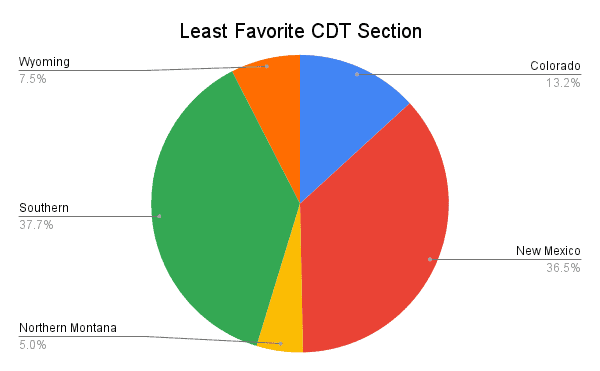
FAVORITE SECTION
Wind River Range
Wyoming (89%)
LEAST FAVORITE SECTION
Pie Town to Grants
New Mexico (57%)
Favorites
- New Mexico: Gila River Alternate (54%)
- Colorado: San Juan Mountains (49%)
- Wyoming: Wind River Range (89%)
- Idaho/Montana: Glacier National Park (79%)
Least Favorites
- New Mexico: Pie Town to Grants (57%)
- Colorado: Rocky Mountain National Park (12%)
- Wyoming: Great Divide Basin (34%)
- Idaho/Montana: Idaho/Montana Border (41%)
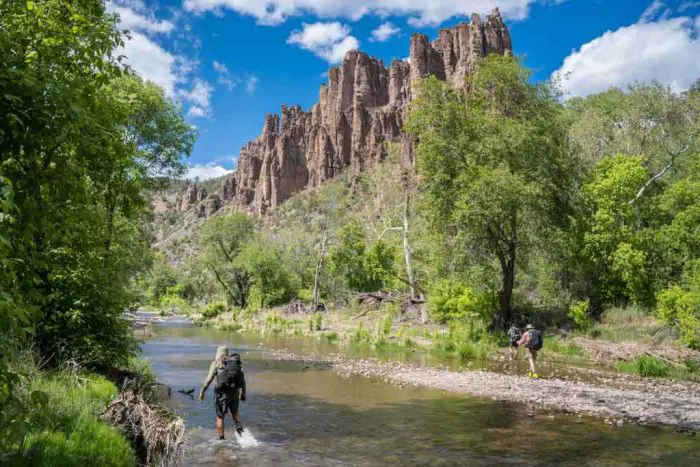
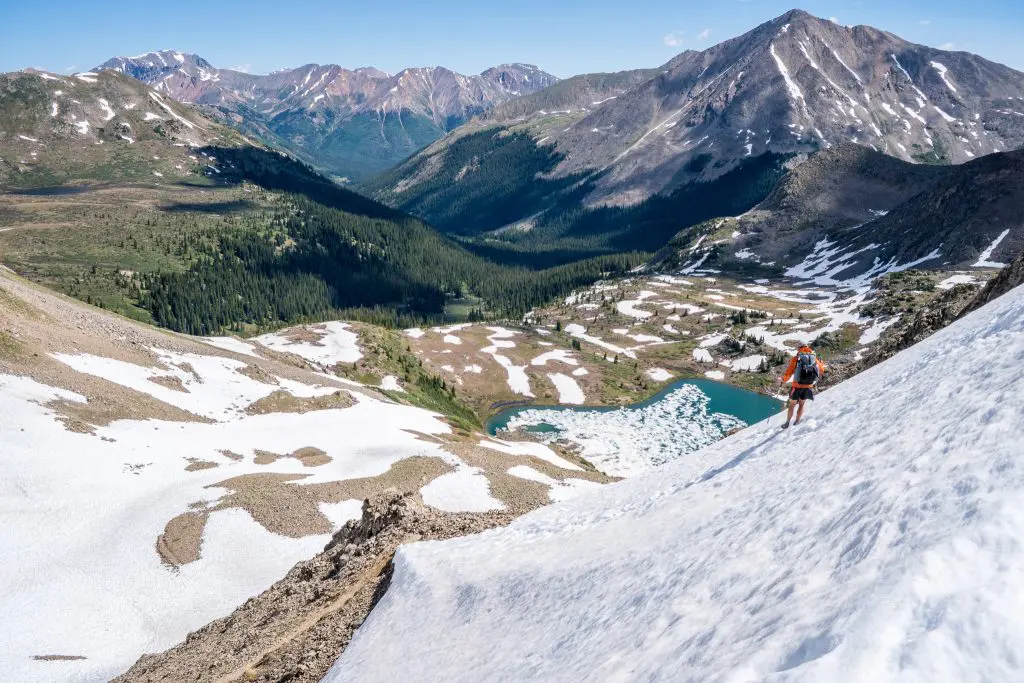
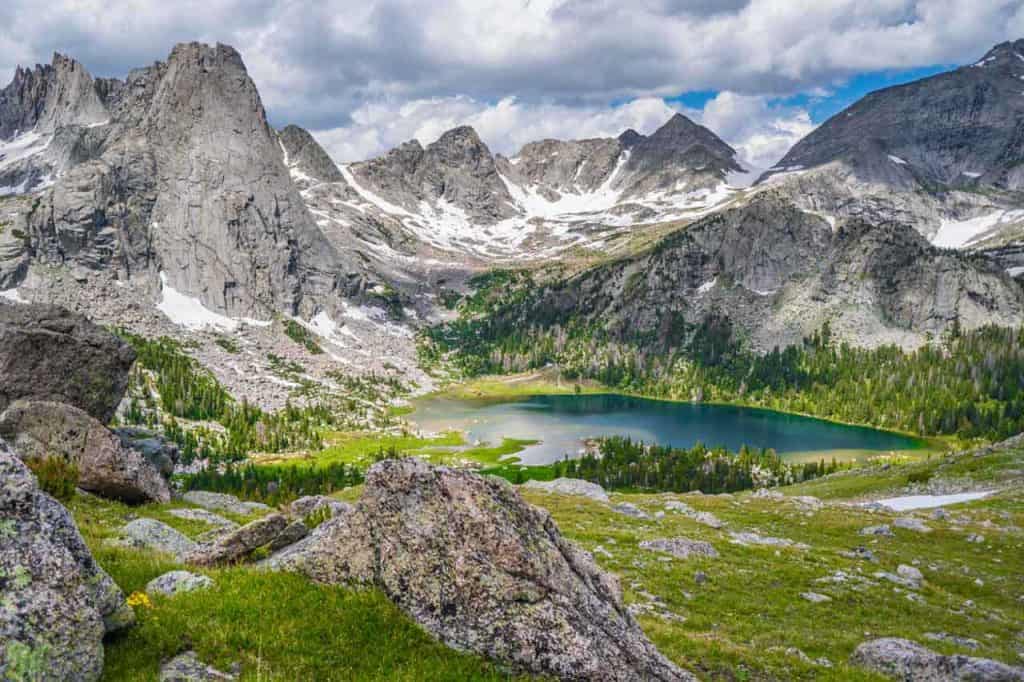
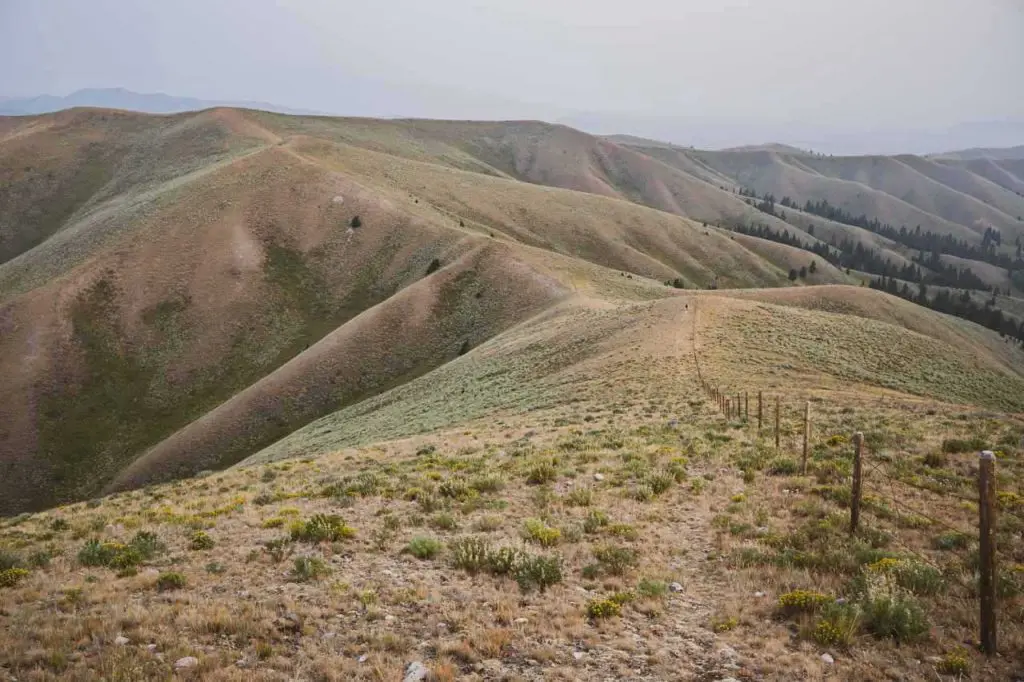
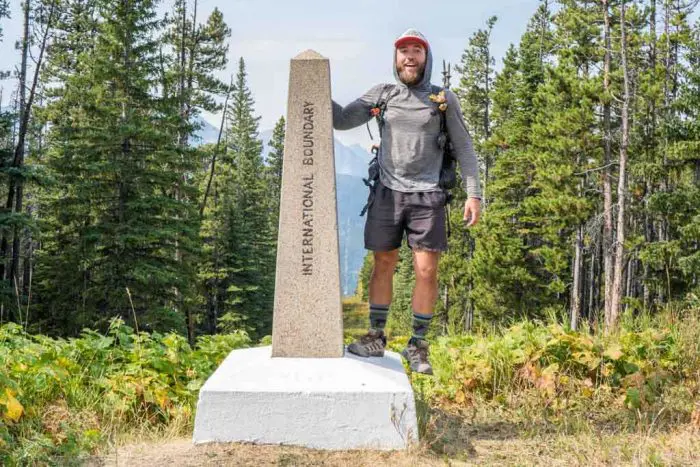
Best & Worst Moments
I will be sharing more of these in a future post, but for now, here are some examples that stood out when I asked hikers about their best moments, worst moments, and terrifying moments from their thru-hikes.
Best CDT Moments
Last year I added a question asking hikers about their best moments from the trail and I’ve decided to keep it in this year. Below are a select few of the responses; I will be detailing more in an upcoming article.
- I really, really enjoyed my time in the Winds (Wyoming). I didn’t have to go into Pinedale to resupply as day hikers kept giving me extra food they had. This let me spend a long, uninterrupted chunk of time in the most gorgeous and interesting part of the entire trail IMO.
- Crushing the Basin (Wyoming) was a real proud moment. I never imagined myself capable of miles like that.
- Bad weather stopped me from climbing James Peak three times on the same day. The next day was beautiful and clear, and the following 25 mi / 40 km of ridge walk views and glacial lakes were the epitome of why I was hiking.
- Meeting random people on and off the trail and the kindness of complete strangers. Talking to them about their lives, struggles, adventures, and what they were doing there.
Worst CDT Moments
- After a long day of solo hiking in the snow in Colorado, I still didn’t find any of my friends and hiked on in the dark, passed them without knowing, then realized my water bottle leaked inside my pack, making everything soaked then it all froze as I removed my sleep stuff from my pack to set up camp. I had to roll around on my gear to melt the ice before I could somewhat dry my stuff to set up camp.
- The Bootheel of New Mexico is brutal if you start later in the season, like early May. Leaving home and family was difficult, even if exciting. I mismanaged my salts and hiked too much in the sun causing heat exhaustion and related illness for the first week which interrupted my hike. Respect the sun.
- Got sick during the final month of hiking (ear infection/head cold) and didn’t feel like I had time to stop and take a break and recover, so I hiked on alone (so as not to get friends sick too) in excessive heat and through wildfire smoke.
- Loneliness and feeling like I constantly had to push on to do bigger miles. Time pressure. I nearly skipped the Basin (Wyoming) because I was so tired and bored and lonely that I just didn’t know how to keep hiking. Some other hikers walked up and I ended up camping with them that night.
Scariest CDT Moments
- I felt out of my league and very unsafe navigating narrow snowy trails in the San Juans, particularly in the stretch from Chama to Pagosa Springs.
- I was charged by a black bear on a narrow trail.
- Walking into a forest fire. It was, I believe, started by CDT hikers according to the firefighters. They thought that because there were no backpackers or hunters in the area the fire was started next to the trail and looked as if it was a warming or cooking fire. Numerous brainless CDT hikers were bragging about cooking over a fire at night. These people aren’t even capable of setting up their tents so that they don’t blow down in the wind. They clearly have no ability to make a safe fire.
- Lightning and hard hail on high Colorado passes. Sometimes it comes fast, sometimes you misjudge it, and sometimes you’re just stupid and try to push through it.
The Continental Divide Trail is, for the most part, an amazing place filled with incredible people. However, just as the trail itself can be not so amazing at times – thunderstorms, fires, cows and their poops – the people too, can occasionally be trash humans with no business representing the CDT or trail community.
There will be an additional article covering social issues on the trail in more detail.

Ageism
Overall, 9.5% of hikers experienced ageism on the Continental Divide Trail. 5.9% experienced ageism from other hikers, 2.4% from people in town, and 1.2% from both their fellow hikers and people in town.
*As ageism was reported by hikers with a wide variety of ages, these percentages are for all hikers.
Homophobia/Transphobia
Overall, 23.5% of LGBTQIA+ hikers experienced homophobia or transphobia on the CDT. 5.9% experienced homophobia or transphobia from other hikers, 8.8% from people in town, and 8.8% from both their fellow hikers and people in town.
Racism
Overall, 50% of BIPOC hikers experienced racism on the CDT. 30% experienced racism from people in town and 20% from both their fellow hikers and people in town.
Sexism
Overall, 43.2% of female hikers experienced sexism on the CDT. 11.8% experienced sexism from other hikers, 19.6% from people in town, and 11.8% from both their fellow hikers and people in town.
Trail Magic
I asked hikers about the frequency with which they encountered or received trail magic. This could mean a friendly person on the trail sharing some fresh fruit with them or a trail angel hanging out at a trailhead giving cold drinks and rides to hikers.
The scale was from 0 (never) to 10 (every day).
- 2.21 New Mexico
- 1.63 Colorado
- 1.41 Wyoming
- 1.01 Idaho/Southern Montana
- 1.33 Northern Montana

Advice for the Future
Now for Continental Divide Trail thru-hiker wisdom. I ask hikers what they would have done differently before their hikes if they were to do it all over again.
Pre-Hike Changes
Overall, 57.6% of thru-hikers said they would have changed something prior to beginning their hikes. Here are the most common changes from those who said they would change something.
- Trained more/gotten in better shape (35.0%)
- Saved more money (31.6%)
- Gotten base weight down/bought lighter gear (25.6%)
- Started earlier (21.4%)
- Had gear more dialed in (14.5%)
- Planned less (13.7%)
- Planned more (8.5%)
- Done more practice hikes (4.3%)
- Started later (3.4%)
Thru-Hikers
22.03 lb
The average base weight of hikers who said they would have liked to have gotten lighter gear before starting their hikes (9.992 kg)
In addition to asking hikers what they would have done differently before their thru-hikes, I asked them what they wish they had done differently during their hikes. Here are the top responses (regrets).
During Hike Changes
Overall, 58.6% of thru-hikers said they would have changed something during their hikes. Here are the most common changes from those who said they would change something.
- More pictures of people (63.9%)
- Slowed down (24.4%)
- Maintained a journal/blog (22.7%)
- Fewer zero days (16.0%)
- Less time in town (16.0%)
- Sped up (14.3%)
- More trail zeros (11.8%)
- More time in town (5.9%)
- More zero days (4.2%)
Thru-Hikers (1)
18
The average number of zero days taken by hikers who said they wish they had taken fewer during their thru-hikes
Thru-hiker Advice
I ask hikers what advice for future CDT hikers they have. This will be thoroughly documented in the upcoming post CDT: Advice For The Future, here is a sample.
- Be strong in making your own decisions. One person’s thrill might be your healthy fear. Be cautious – one moment’s thrill could lead to a lifetime of injury and physical hardship if not even a loss of life. Be honest with yourself – if you’re not enjoying the hike, consider leaving. Time is precious – don’t waste it on something that is not worthwhile.
- Go as fast or slow as you feel like, don’t try to hike anyone else’s hike. Take all the alternatives you want, the CDT is all about making your own adventure. It’s ok to take a shortcut if you want to get in/out of town faster, or just make some more miles. Don’t skip sections, try to keep your footsteps connected. Road walking is not as bad as you might think. Nothing will go as planned, the trail will throw you a curve ball every day and that’s the beauty of it.
- Research proper grizzly country food storage and food prep behavior before your trip. We saw a lot of hikers putting themselves and future site users in jeopardy, some proudly so. There was a lot of misinformation and people making things up out there. When you get to a good tent site, assume someone has recently cooked where you’re about to set up a tent – they likely have.
- Don’t worry about the weight and carry a lot of water. Don’t be the guy who bragged about his ability to cross a desert with just two liters of water while complaining about how high his heart rate always was.
Animal Sightings
Now, some data that doesn’t quite fit anywhere else; what kind of wildlife did Continental Divide Trail hikers see on the trail? The most common animals? Deer. The worst. The rarest of the animal kingdom? Gila monster. If you don’t know what a Gila monster is, look it up, they’re pretty cool animals.
Animals Seen
- Deer 99.3%
- Moose 99.3%
- Elk 97.3%
- Marmot 96.6%
- Black bear 91.2%
- Snake (not a rattlesnake) 90.5%
- Mountain goat 83.7%
- Pika 81.6%
- Wild horse 77.6%
- Coyote 76.9%
- Pronghorn 74.1%
- Rattlesnake 72.8%
- Fox 70.1%
- Grizzly bear 64.6%
- Owl 44.9%
- Porcupine 44.2%
- Pine marten 32.7%
- Bison 30.6%
- Skunk 17.7%
- Wolf 16.3%
- Mountain lion (aka cougar) 14.3%
- Bobcat 6.8%
- Tortoise 4.8%
- Gila monster 3.4%

Support the Survey
Every year, I receive numerous requests for guidance on how to support the surveys. Beyond sharing them with your close-knit bubble of weird hiker friends, the best way to support the survey is to contribute via Patreon. You’ll get access to exclusive posts, discount codes, live streams, and super awesome stickers so that everyone will know how cool you are.
If you’re not into Patreon, that’s cool; you can Venmo @halfwayanywhere, Cash app $halfwayanywhere, or PayPal contact@halfwayanywhere.com
This is not expected. The data collected in the survey will always be free and accessible to everyone who wants/needs it. Your support is much appreciated and helps pay the website (and survey) bills.



CDT Survey Collection
Finally, another HUGE THANK YOU to all the hikers who completed this year’s survey, including (but not limited to): ‘lulu, 70 LB Hammer, Almost, Angel Wings, Apples, Arrow, Atlas, Axel, Baby Grand, Bambi Magnet, Bandaid, Beans, Benji, Big Sky, Bird, Birdman, Blackout, Blaze, Blind Spot, Blink, Blue Blaze, Blue Collar, Blue Rabbit, Boomerang, Boss, Breeze, Breezy, Bright Eyes, Chairman, Channy, Cheetah, Chickenfat, Chit Chat, Chuckles, Clink, Coach (as in not First Class), CrossCreek, Dallas, Dead Weight, Denver, Dictionary, Dingo, Dog whisperer, Draggin’, Dread Pirate, Drop Bear, Ducky, Dyno, enigma, ET, EZ/Easy, Finder, Fixit, Franzia, Fuck-It, Gargoyle, Ghosthiker, GMG, Go Go, Google, GoPro, Govy, Green Mtn Grrl, Griffon, Grit, Grubs, Gusha, Headfirst, HotPocket, Hyde, Icarus, J.I.F., JoeDirt, Jon without an H, Kansas Express, Karaoke, Karl, Keebler, Kinder, King Pin, Kraken, La Copa, Leftovers, Legs, Lilian, Lone Wolf, Longstride, Lotus, Lucky, Marmot, Martin from Holland, Masochist, Masterchef, Meatpaws, Mercury, Minty, Mishap, Mona Lisa, Monk, Mountain Goat, Mouse, Mr. Freeze, Mr. Overhill, Ms. America, Mushka, North, Old Bag, Old Soul, Oli, Ostrich, Pilgrim, Piper, Pitter Patter, Pittsburgh, Puddles, Queen Bee, Rabbit, Raider, Recharge, Red Man, Rex, Ripparoni, Roadwalk, RockHound, Sailcat, Shellac, Short Stix, ShotGun, SHREDDER, Shutterbug, Shuttle, Silver, Skippy, Slim, Smoothie!, Snailtrainer, Snurgle, Soccer Mom, Some Guy, Sommelier, Sonic, Sonic Supernova, Spacegoat, SPECIAL K, Splash, Sports Mode, Spreadsheet, Sputnik, St Bernard, Stardust, Stevie Wonder, Stuck, Sweettooth, TDubs, Ten Gallon, Tesla, The Beast, The Brain, Tigerduck, Tin Man, Trademark, Travelinbeat, Two Bucks, Two Dog, Veggie, Vista, Wicket, WindChime, Wingnut, Witcher, Woodpecker, and Wow.
If you have any feedback, comments, or suggestions to improve the survey or data you would like to see in future posts or surveys, let me know!
Affiliate Disclosure: This page may contain affiliate links, which means I may receive small commissions for purchases made via these links at no additional cost to you. This helps pay the bills and keep the site up and running. Thank you for your support!



